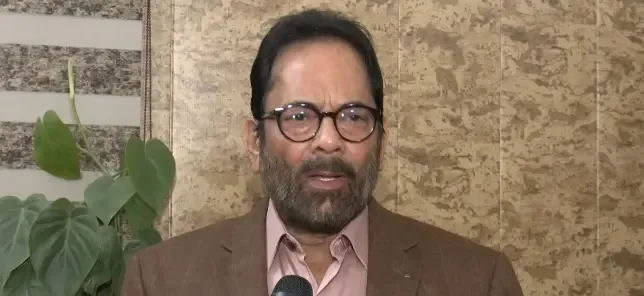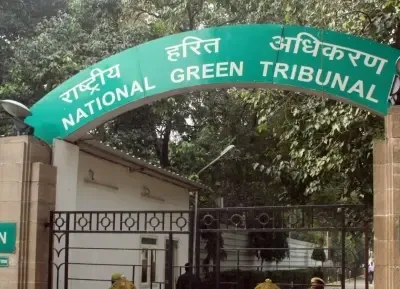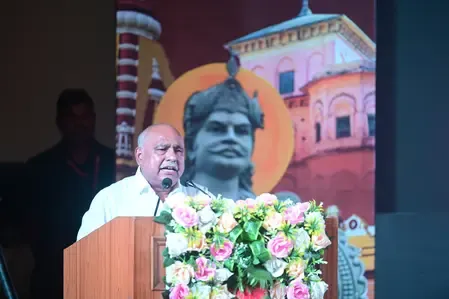Is Bumper Voting in Bihar a Sign of a Bumper Victory?

Synopsis
Key Takeaways
- High voter turnout in Bihar signifies public engagement.
- BJP interprets this as a strong backing for the NDA.
- Women voters played a crucial role in this election.
- Vande Mataram's anniversary highlights India's cultural identity.
- The electoral process showcases the resilience of democracy.
New Delhi, Nov 7 (NationPress) Following the initial phase of the Bihar elections, BJP leader Mukhtar Abbas Naqvi stated that the impressive voter turnout signifies a certain triumph for the NDA.
In an interview with IANS, Naqvi remarked, “The remarkable voting reflects a forthcoming victory. It clearly illustrates the sentiments of the populace. In spite of efforts from certain parties to dissuade voters—whether through false claims about EVM tampering or the dissemination of misleading narratives about electoral fraud—the people of Bihar have showcased their zeal and dedication to democracy by voting in substantial numbers. This serves as both a lesson and a message for those who sought to demoralize them.”
Bihar achieved a voter turnout of approximately 65% during the first phase of its Assembly elections on Thursday, marking the highest participation rate in the state's electoral history. This election also saw a significant increase in female voters who came out to cast their ballots, which the BJP interprets as evidence of their faith in the policies of the Chief Minister Nitish Kumar-led NDA government and the PM Modi-led national administration.
Naqvi also addressed the 150th anniversary of India’s National Song, Vande Mataram, stating, “Vande Mataram transcends being merely a national song; it embodies our national pride. Its acceptance as the national song was not a unilateral decision but a collective affirmation from the entire nation acting in unison.”
The nation is celebrating the 150th anniversary of Vande Mataram today. This song, a timeless anthem, has motivated numerous generations of freedom fighters and nation-builders, symbolizing India's national identity and collective spirit. Composed by Bankim Chandra Chatterjee, 'Vande Mataram' was first published in the literary journal Bangadarshan on November 7, 1875.
Later, Bankim Chandra Chatterjee included the hymn in his renowned novel 'Anandamath', published in 1882, which was set to music by Rabindranath Tagore. It has become a fundamental aspect of the nation’s civilizational, political, and cultural ethos. This celebration serves as a moment to reaffirm the enduring message of unity, sacrifice, and devotion that Vande Mataram represents for all Indians.









